Title : Chemical pleurodesis with povidone iodine in pneumothorax and metastatic pleural effusions
Abstract:
Introduction: Chronic or recurrent pneumothorax and metastatic pleurisy are serious problems. Thez need to find a less invasive and inexpensive therapeutic means to create a symphysis. We report our experience in chemical pleurodesis with povidone iodine at 10% (betadine) during 5 years.
Materials and method: prospective descriptive study between 2019- 2025. This chemical pleurodesis with betadine was indicated in cases of chronic pneumothorax lasting more than 10 days or after 2 recurrences in 27 cases and in 30 cases of recurrent metastatic pleurisy. We excluded dysthyroidis and Iodine povidone allergy.
Chemical pleurodesis technique with 10% of betadine: instillation is done in the supine position through chest tube. In case of metastases pleurisy: after ultrasound detection and pleural drainage of fluid, betadine is instilled through the drain. This solution contains 20 ml of 10% Betadine, 80 ml of 9% isotonic saline serum and 5 ml of 2% xylocaine. It maintained for 2 hours Then trans- mural aspiration. Removal of the drain after aspiration for metastases pleurisy and after disappearance the pneumothorax.
Results: This technique was a success with an effectiveness of around 90% in cases of pneumothorax. 70.37% benefited from a single instillation and 29.62% after 2 instillations. Lung expansion noted between the 2nd and 5th day. No recurrence of pneumothorax in 88.46% after pleurodesis with a follow- up of 3 years in 91.30% cases. Concerning metastatic pleurisy drying of the fluid after a single instillation was noted in 90%.
Local infectious complications were noted in 6 cases. Good tolerance apart from local pain of variable intensity in all pneumothoraxes while it is absent in cases of metastatic pleurisy.
Conclusion : The chemical pleurodesis with bétadine has effectiveness, safety and good tolerance. It is an interesting alternative with a lower cost compared to other sclerogen.


